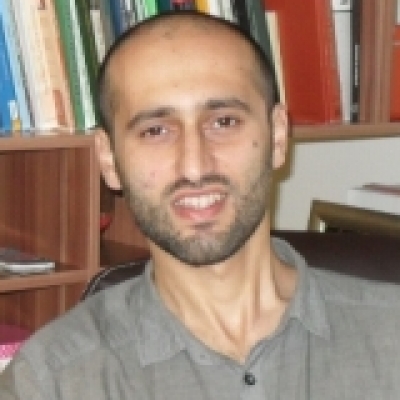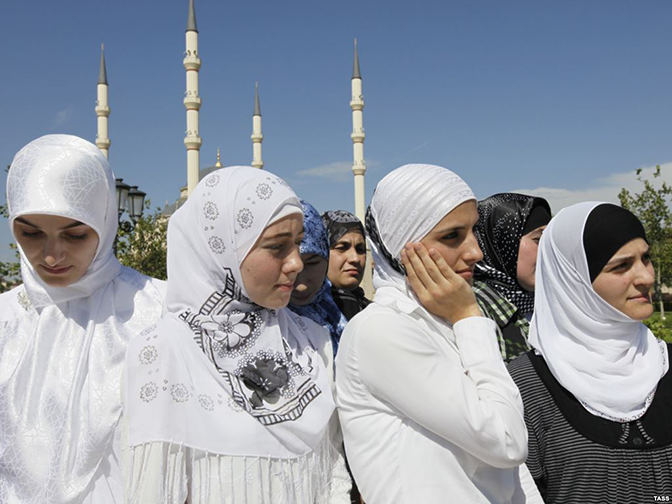Chechen war forced Russia to update federalist structures
 Maksud Djavadov
Maksud Djavadov
Many Muslims living in Western secular societies are often fascinated by the basic freedoms they think they enjoy. Freedoms and rights that Muslims believe they enjoy in Western societies are due to sophisticated socio-political calculations, not secular-liberal benevolence.
Muslims in Germany, Canada, or Britain, for instance, will never in the near future score landslide parliamentary victories or become key decision makers at the state level. Thus, allowing Muslim minorities to freely print newspapers, organize Islamic scholarly events, etc. strengthens Western secular regimes in terms of soft power. It poses no challenge to the established wealthy political class.
The same secular Western systems that champion the right of Muslim women to wear hijab in Western countries gladly support the most autocratic regimes in the Muslim world. Tunisia’s ex-dictator, Zayn al-‘Abidin ibn ‘Ali was the darling of the West mainly because he was against Islamic activists whom he regularly tortured, imprisoned, and murdered. Western secular political platforms that preach unity and how people must forget their differences and focus on commonalities are the same ones who constantly remind Muslims in the Muslim world that Sunnis and Shi‘is are opponents. Why the inconsistency? Sunni-Shi‘i tensions in Baghdad bring down the Iraqi State; Sunni-Shi‘i tension in Western capitals will destabilize the West.
With this in mind, the current analysis will look at another control mechanism exercised by a non-Muslim state entity: Russia. This article does not aim to promote Russian or Western control mechanisms; it simply wants Muslims to understand it.
Many Muslims who reverted to Islam after the collapse of the Soviet Union would cite the first Chechen war (1994–1996) as one of the most important events that shaped their social and public Muslim identity in the early-1990s. When Chechnya gained de facto independence from 1996 to 1999 after expelling Russian forces, unfortunately, Wahhabi ideas infiltrated the Islamic trend in Chechnya. Crescent International has analyzed this phenomenon numerous times. Once Moscow established control over the region, it became highly decentralized. The Kremlin drew broad redlines and as long as those were not crossed by the local Chechen administration, which partly consists of ex-pro-independence fighters, the Chechens could do as they pleased.
In April 2015, Chechnya’s regional head, Ramzan Kadyrov, publicly stated that Chechen police officers should open fire upon any law enforcement agents from other Russian regions if they operate in Chechnya without the permission of the local Chechen administration. This is a bold statement that probably no other head of the Russian region would get away with.
One of the reasons Kadyrov was able to make this statement in 2015 was because after the Wahhabi forces were defeated in Chechnya during the presidency of Vladimir Putin, Moscow rightly assessed that only through strong federalist state structure can an ethnic consolidation of Russia be maintained.
It must be borne in mind that events in the arena of international politics always revolved around the question of the acquisition of political sovereignty by some group of people. Often the just cause and demand for more freedom and independence by a group of people was unjustly and brutally suppressed due to the imperial ambitions of certain superpowers. As pointed out by Tatar Russian scholar Raphael Khakimov, “the development of political events is influenced not only by states, but by peoples who do not have their own statehood and who are striving to gain it.”
The exclusion of these peoples from world politics is one of the main reasons for international instability today and in the past. Russia has learned this through its experience of the collapse of the USSR and the Chechen wars. After the violent pacification of Chechnya both parties, Chechens and Russian authorities, realized that to avoid a constant state of instability and conflict, a long-term solution must be pursued.
Strengthening of federalist structure of Russia in the North Caucasus was wisely chosen by Putin as the most efficient parameters of not allowing the situation of the 1990s to return. Of course, due credit must be given to the heroic Chechen nation of one million people, which forced this realization on the Russian government. The central government of Russia accepted Chechens and indirectly other ethnic minorities as relatively equal players. Were it not for the first Chechen war, Russia would be less federalist today.
Thus, understanding the Federal structure of Russia is essential. To do so, one must first understand the status of Russia within the USSR. After the collapse of communism, the Russian state came to be the natural successor of the USSR and became officially known as the Russian Federation.
According to article 70 of the USSR constitution, the Soviet Union was defined as a federal state that was composed of 15 Socialist Republics whose rights were de jure equal. However, de facto the rights of other republics were far below that of Russia.
If one takes into consideration the historical events in the formation of the USSR and Russia in general and if the theoretical rights of the USSR republics were to be applied in practice the USSR would have collapsed much earlier. Due to forceful incorporation of almost all republics into the communist bloc by Russia, it would be impossible to keep them within the USSR of their own free will.
Thus, if the right to self-determination were applied in practice, al-most all the republics forming the USSR would turn toward national independence. The fear of disintegration of the USSR always kept governmental agencies on alert and forced them to respond harshly toward any secessionist movements. The crude responses often backfired when viewed over the long term.
During the existence of the USSR the main goal of the government apparatus was to maintain communism as a mask for the governing system. After its collapse, Russian government agencies lost their minimal ideological basis. Therefore, the purpose for the existence of many government agencies disappeared. The state structures that were responsible for the maintenance of the USSR now needed to be transformed in their purpose and method.
During the transformation period, Russian federalism faced many obstacles that it needed to overcome to establish a stable federal state. Russia as a multi-ethnic state faces a threat of further disintegration and can meet the fate of the USSR. The current Russian government correctly assessed that forceful management of ethnic minorities based on the Soviet model was outdated and needed to be refashioned. The Chechen war of the 1990's forced Moscow to speed up its federalist transformation.
Today the federalist structure of Russia combined with the bitter experiences of the 1990s in the North Caucasus allow Muslim regions of Russia to function as full-fledged autonomous regions. In a practical sense today Islam in Russian controlled Chechnya is implemented in a far broader sense than in the so-called independent Muslim states of Central Asia and South Caucasus. Hijab is almost made socially compulsory in Chechnya, alcohol is actively discouraged by the local administration and Islamic worship rituals are actively encouraged at the government level. None of this is tolerated even on a minimal level in Central Asia and the South Caucasus.
With this background in mind, if Moscow continues to decentralize control over its Muslim minorities, Russia will create a sustainable long-term social contract with its Muslim citizens that would make the Western control mechanism of Muslims look less sophisticated. The only issue that would undermine such progress would be the rise of Russian nationalism, an action that will evoke negative reaction from the ethnic minorities in Russia.



No comments:
Post a Comment